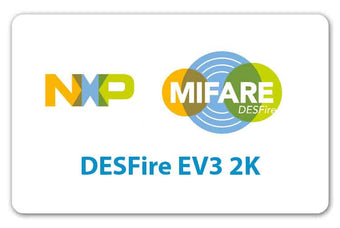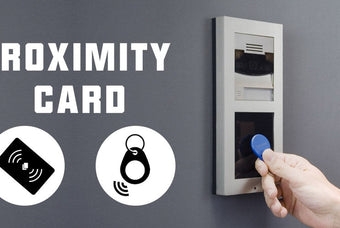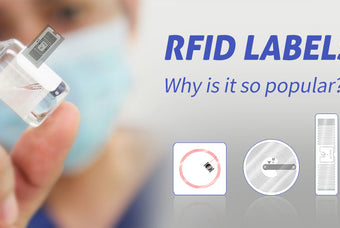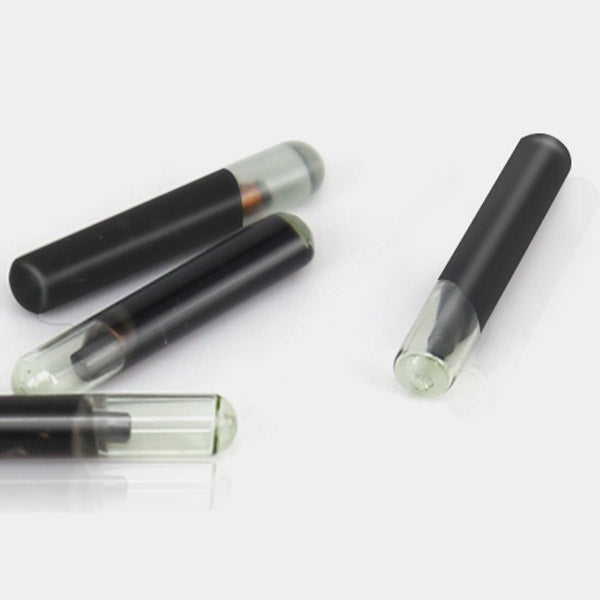
Animal microchips are transponders that use radio waves to exchange data. it’s small, which may make sure that it’s suitable for your pet without causing discomfort;
This article compiles the simplest commonly asked questions on pet microchips. Keep reading to know.
What is a microchip?
A microchip may be a small, electronic chip enclosed during a glass cylinder that’s about an equivalent size as a grain of rice. The microchip itself doesn’t have a battery—it is activated by a scanner that’s omitted the world, and therefore the radiowaves put out by the scanner activate the chip. The chip transmits the number to the scanner, which displays the amount on the screen. The microchip itself is additionally called a transponder.
How is a microchip implanted into an animal?
It is injected under the skin employing a needle. it’s no more painful than a typical injection, although the needle is slightly larger than those used for injection. No surgery or anesthesia is required—a microchip is often implanted during a routine veterinary office visit. If your pet is already under anesthesia for a procedure, like neutering or spaying, the microchip can often be implanted while they’re still under anesthesia.
What kind of information is contained in the microchip?
The microchips presently utilized in pets only contain identification numbers. No, the microchip isn’t a GPS device and can’t track your animal if it gets lost. Although this technology microchip itself doesn’t contain your pet’s medical information, some microchip registration databases will allow you to store that information within the database for quick reference.
Should I be concerned about my privacy if my pet is microchipped?
You don’t get to worry about your privacy. the knowledge you provide to the manufacturer’s microchip registry is going to be wont to contact you within the event your pet is found and their microchip is scanned. In most cases, you’ll prefer to opt-in or cop-out of other communications (such as newsletters or advertisements) from the manufacturer. the sole information about you contained within the database is that the information that you simply prefer to provide once you register the chip or update your information. There are protections in situ in order that a random person can’t just search an owner’s identification.
What do they mean by “microchip frequency?”
The frequency of a microchip actually refers to the frequency of the radiowave given off by the scanner that activates and reads the microchip. samples of microchip frequencies utilized in the U.S. include 125 kiloHertz (kHz), 128 kHz, and 134.2 kHz.
I’ve heard about something called “ISO standard.” What does that mean?
The International Standards Organization, or ISO, has approved and recommended a worldwide standard for microchips. the worldwide standard is meant to make an identification system that’s consistent worldwide. for instance, if a dog was implanted with an ISO standard microchip within the U.S. travels to Europe with its owners, and becomes lost, the ISO standard scanners in Europe would be ready to read the dog’s microchip. If the dog was implanted with a non-ISO microchip and therefore the ISO scanner wasn’t forward- and backward-reading (universal), the dog’s microchip won’t be detected or be read by the scanner.
The ISO standard frequency is 134.2 KHz.
What are universal (forward- and backward-reading) scanners? How do they differ from other scanners?
Forward-reading scanners only detect 134.2 kHz (ISO standard) microchips, but won’t detect 125 kHz or 128kHz (non-ISO standard) microchips. Universal scanners also called forward- and backward-reading scanners, detect all microchip frequencies. the most advantage of universal scanners is that the improved chances of detecting and reading a microchip, no matter the frequency. It also eliminates the necessity for multiple scanners with multiple frequencies.
How does a microchip help reunite a lost animal with its owner?
When an animal is found and brought to a shelter or veterinary clinic, one among the primary things they are doing is scan the animal for a microchip. If they find a microchip, and if the microchip registry has accurate information, they will quickly find the animal’s owner.
Will a microchip really make it more likely for me to get my pet back if it is lost?
Definitely! A study of quite 7,700 stray animals at animal shelters showed that dogs without microchips were returned to their owners 21.9% of the time, whereas microchipped dogs were returned to their owners 52.2% of the time. Cats without microchips were reunited with their owners just one .8% of the time, whereas microchipped cats went back home 38.5% of the time. (Lord et al, JAVMA, July 15, 2009) For microchipped animals that weren’t returned to their owners, most of the time it had been thanks to incorrect owner information (or no owner information) within the microchip registry database – so do not forget to register and keep your information updated.
Absolutely not. Microchips are great for permanent identification that’s tamper-proof, but nothing replaces a collar with up-to-date identification tags. If a pet is wearing a collar with tags when it’s lost, it’s often a really quick process to read the tag and get in touch with the owner; however, the knowledge on the tags must be accurate and up-to-date. But if a pet isn’t wearing a collar and tags, or if the collar is lost or removed, then the presence of a microchip could be the sole way the pet’s owner is often found.
Your pet’s rabies tag should get on its collar, so people can quickly see that your pet has been vaccinated for this deadly disease. Rabies tag numbers also allow tracing of animals and identification of a lost animal’s owner, but it is often hard to possess a rabies number traced after veterinary clinics or county offices are closed for the day. The microchip databases are online or telephone-accessed databases and are available 24/7/365.
I just adopted a pet from the animal shelter. Is it microchipped? How can I find out?
If the shelter scanned the animal, they ought to be ready to tell you if it’s microchipped. Some shelters implant microchips into every animal they adopt out, so ask the shelter and determine your new pet’s microchip number so you’ll catch on registered in your name.
Most veterinary clinics have microchip scanners, and your veterinarian can scan your new pet for a microchip once you take your new pet for its veterinary checkup. Microchips show abreast of radiographs (x-rays), so that’s different to seem for one.
Why should I have my animals microchipped?
The best reason to possess your animals microchipped is that the improved chance that you’re going to get your animal back if it becomes lost or stolen.
I want to get my animal(s) microchipped. Where do I go?
To your veterinarian, of course! Most veterinary clinics keep microchips on hand; so, it is likely that your pet can be implanted with a microchip the same day as your appointment. Sometimes local shelters or businesses will host a microchipping event, too.
Why can’t I just buy the microchip and implant it myself?
it’s sort of a simple-enough procedure to implant a microchip – in any case , it’s a bit like giving an injection, right? Well, yes and no. Although it’s sort of a simple injection, it’s vital that the microchip is implanted properly. Using an excessive amount of force, placing the needle too deeply, or placing it within the wrong location can’t only make it difficult to detect or read the microchip within the future, but it also can cause life-threatening problems. Microchips should really be implanted under supervision by a veterinarian, because veterinarians know where the microchips should be placed, skills to put them, and skills to acknowledge the signs of a drag and treat one if it occurs.
Once the microchip has been implanted, what do I do? Is there any sort of maintenance needed?
There really is not any maintenance required for microchips themselves, although you are doing got to register the microchip and keep your contact information up-to-date within the microchip registration database. If you notice any abnormalities at the location where the microchip was implanted, like drainage (oozing) or swelling, contact your veterinarian. Ideally, the microchip should be scanned during your animal’s regular wellness/preventive care exams to form sure that it’s still in situ and dealing because it should.
I heard about a dog that was euthanized by a shelter because his microchip wasn’t detected by the shelter’s scanner. How can I know that won’t happen to my pet?
Unfortunately, there are instances where a pet’s microchip wasn’t detected by the animal shelter’s scanner, and therefore the pet was euthanized after the standard holding period because they might not locate its owner. Although these are heartbreaking circumstances, the great news is that this is often now unlikely to happen due to the supply of universal (forward-and-backward reading) scanners.
Why are microchips sometimes not found?
As with almost anything, it isn’t a foolproof system. Although it’s extremely rare, microchips can fail and become unable to be detected by a scanner. Problems with the scanners also are not common, but can occur. Human error, like improper scanning technique or incomplete scanning of an animal, also can cause failure to detect a microchip.
Some of the animal-related factors which will make it difficult to detect a microchip include the following: animals that will not stay still or struggle an excessive amount of while being scanned; the presence of long, matted hair at or near the microchip implantation site; excessive fat deposits within the region of implantation; and a metal collar (or a collar with tons of metal on it). All of those can interfere with the scanning and detection of the microchip.
My pet has two different frequency microchips implanted. Do I need to have one removed?
No, you are doing not got to have one among the microchips removed and no, they’re going to not interfere with one another . The microchip detected by the scanner will depend upon the scanner used – if it’s a universal (forward- and backward-reading) scanner, it’ll probably detect each chip because it is omitted it. To detect the opposite chip, the scanner has got to be reset and omitted the world where it’s located. If it’s a scanner that only reads one microchip frequency, it’ll only detect a microchip of that specific frequency and can not detect or read the opposite microchip.
I’m relocating to a country that requires ISO chips, and my pet does not have an ISO chip or doesn’t have a microchip at all. What do I need to do?
Your pet will got to be implanted with an ISO microchip before it’ll be allowed into that country. But that’s not the sole thing you would like to know: countries differ widely on their importation rules, including different regulations about required vaccinations and quarantine periods once the animal enters that country. If you are doing some research and preparation, your pet’s relocation can go smoothly. Contact the country of origin to work out their requirements regarding microchips also as vaccinations, certificates, etc. Alternatively, you’ll contact an experienced animal shipper who is well-versed within the processes and regulations affecting animal shipment.










